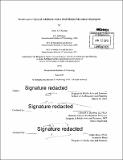| dc.contributor.advisor | Edward S. Boyden, III. | en_US |
| dc.contributor.author | Chuong, Amy (Amy S.) | en_US |
| dc.contributor.other | Massachusetts Institute of Technology. Department of Architecture. Program in Media Arts and Sciences. | en_US |
| dc.date.accessioned | 2015-09-17T19:02:08Z | |
| dc.date.available | 2015-09-17T19:02:08Z | |
| dc.date.copyright | 2015 | en_US |
| dc.date.issued | 2015 | en_US |
| dc.identifier.uri | http://hdl.handle.net/1721.1/98648 | |
| dc.description | Thesis: Ph. D., Massachusetts Institute of Technology, School of Architecture and Planning, Program in Media Arts and Sciences, 2015. | en_US |
| dc.description | Cataloged from PDF version of thesis. | en_US |
| dc.description | Includes bibliographical references. | en_US |
| dc.description.abstract | Optogenetic inhibition of neurons enables the causal assessment of their contributions to brain functions, but a limit to the utility of optogenetic modulation is the quantity of neural tissue that can be successfully addressed from a given optical source. Previous optogenetic inhibitors are driven by blue, green, or yellow wavelengths, all of which suffer substantial light power attenuation as a result of tissue and hemoglobin optical absorption. In this thesis, I describe the discovery, engineering, and implementation of a new red-shifted cruxhalorhodopsin, Jaws, derived from Haloarcula salinarum (strain Shark), which mediates three-fold higher red light-induced photocurrents than other inhibitory opsins. I describe the design process involved in engineering Jaws, as well as its characterization in vitro, ex vivo, within the awake in vivo rodent brain, and in transgenic mice. Jaws exhibits robust inhibition of sensory-evoked neural activity in the cortex and results in strong light responses when used in retinas of retinitis pigmentosa model mice. Finally, I demonstrate that Jaws can mediate transcranial optical silencing of neurons deep in the brains of awake mice. The noninvasive optogenetic inhibition opened up by Jaws enables a variety of important neuroscience experiments, and offers a powerful general-use chloride pump for basic and applied neuroscience. | en_US |
| dc.description.statementofresponsibility | by Amy S. Chuong. | en_US |
| dc.format.extent | 98 pages | en_US |
| dc.language.iso | eng | en_US |
| dc.publisher | Massachusetts Institute of Technology | en_US |
| dc.rights | M.I.T. theses are protected by copyright. They may be viewed from this source for any purpose, but reproduction or distribution in any format is prohibited without written permission. See provided URL for inquiries about permission. | en_US |
| dc.rights.uri | http://dspace.mit.edu/handle/1721.1/7582 | en_US |
| dc.subject | Architecture. Program in Media Arts and Sciences. | en_US |
| dc.title | Noninvasive optical inhibition with a red-shifted microbial rhodopsin | en_US |
| dc.type | Thesis | en_US |
| dc.description.degree | Ph. D. | en_US |
| dc.contributor.department | Program in Media Arts and Sciences (Massachusetts Institute of Technology) | |
| dc.identifier.oclc | 920678211 | en_US |
